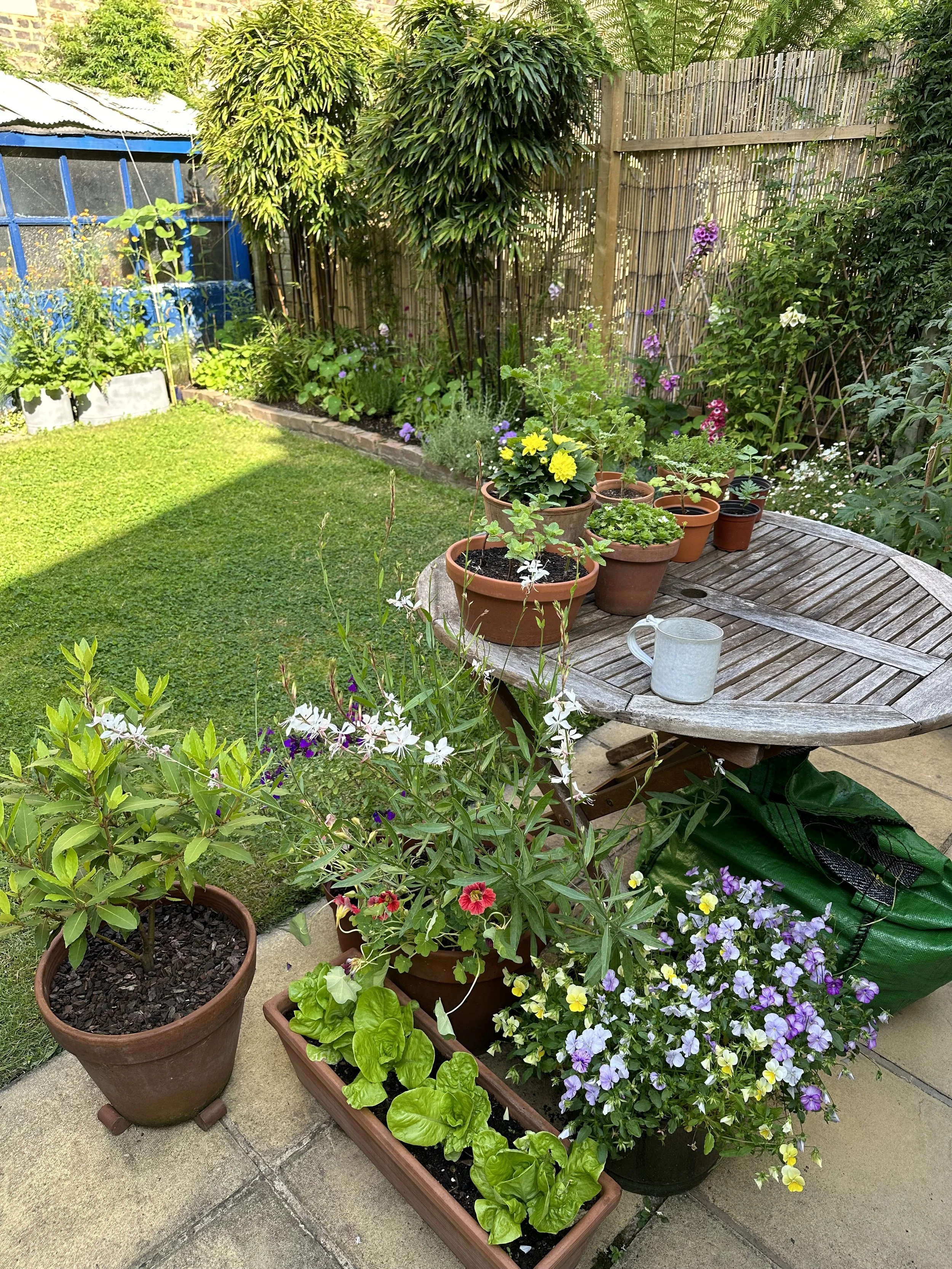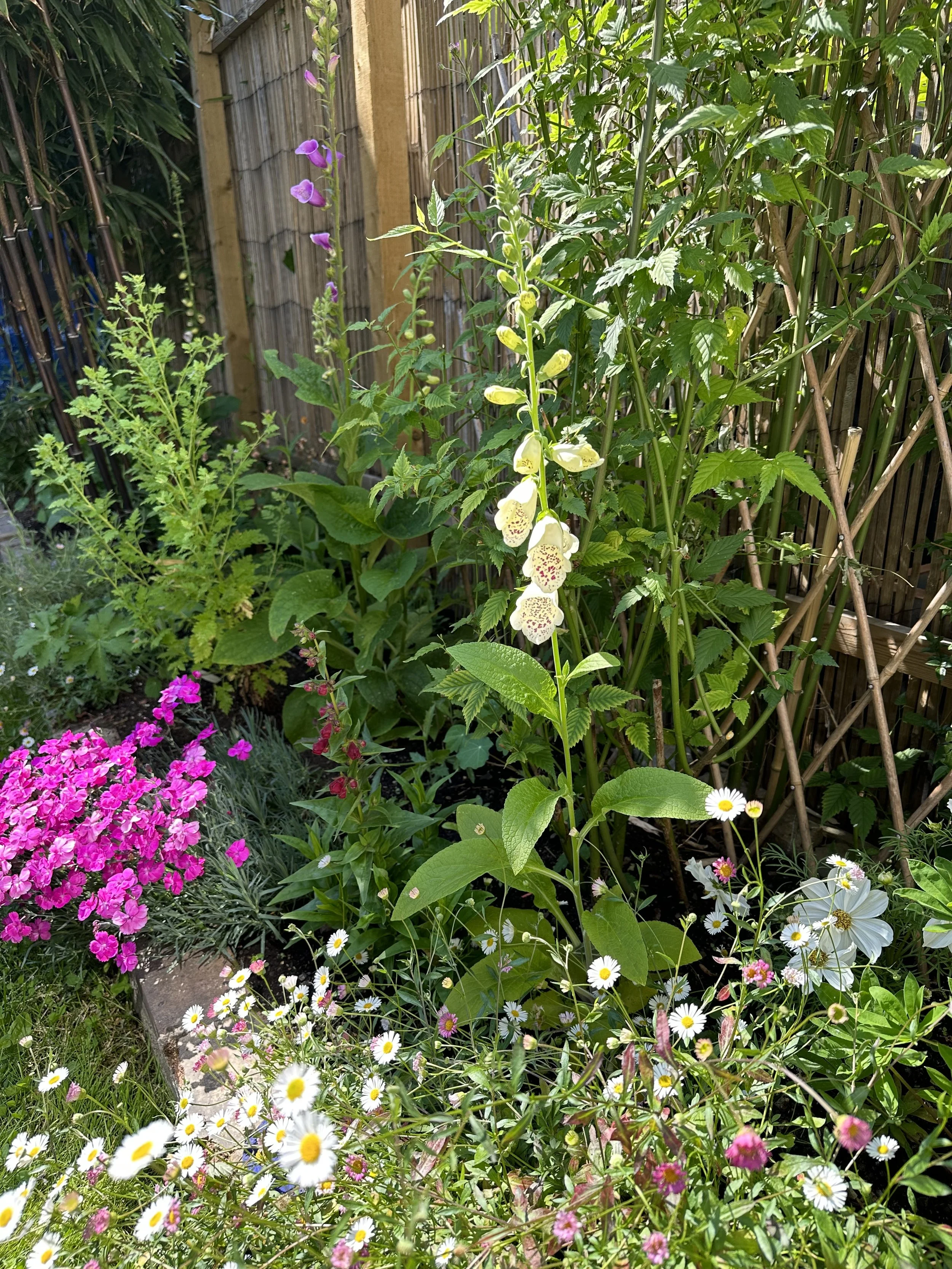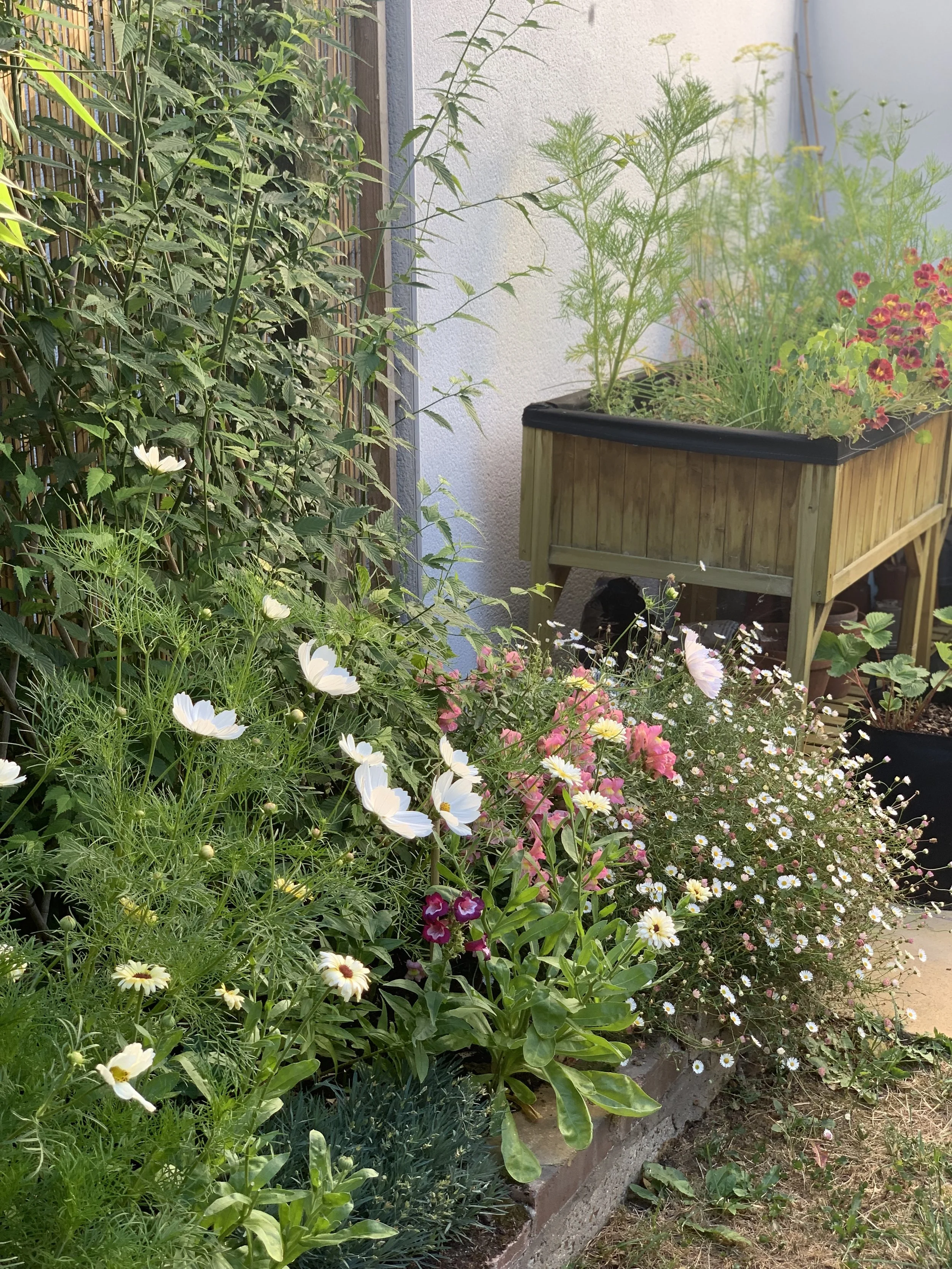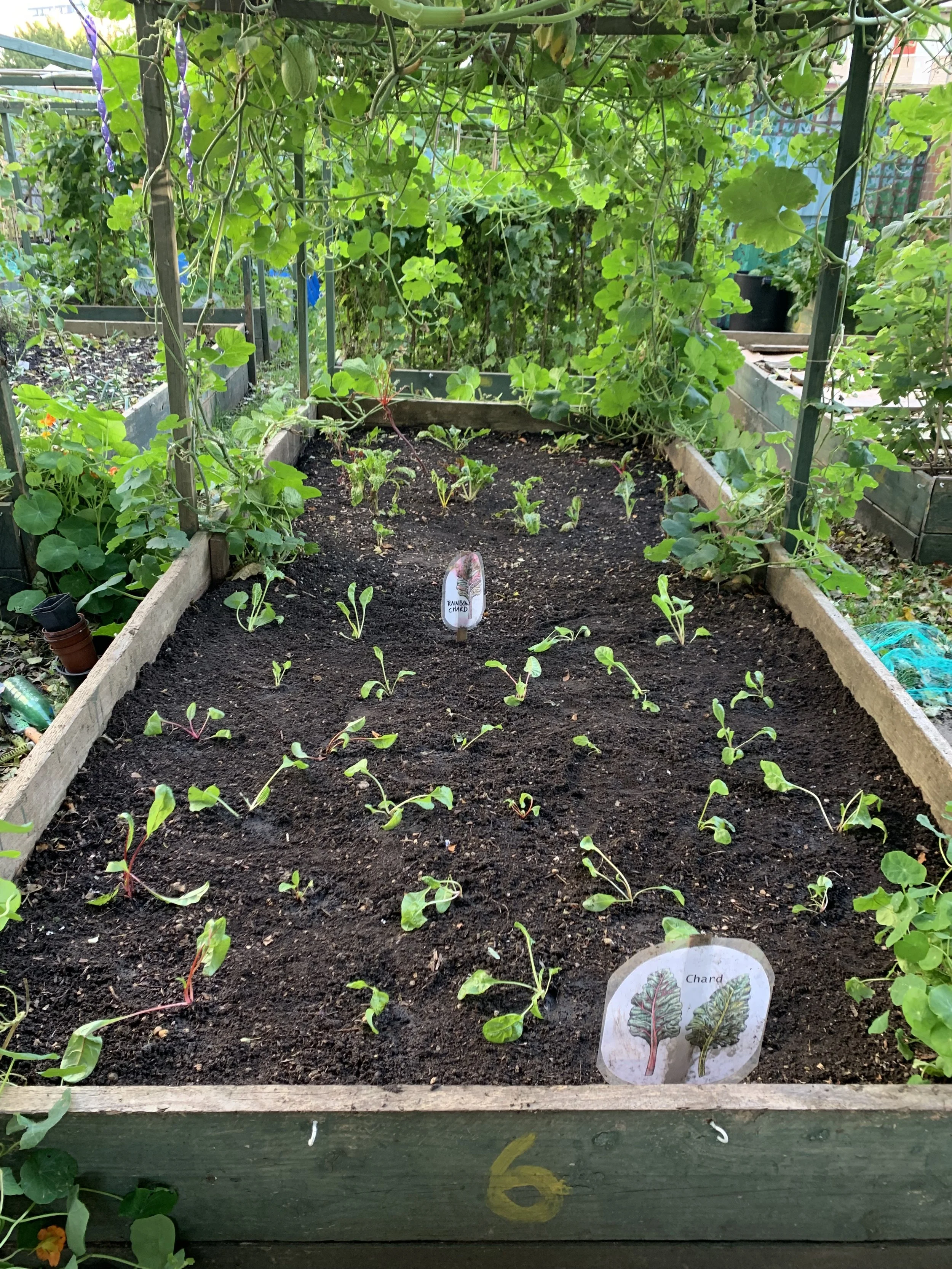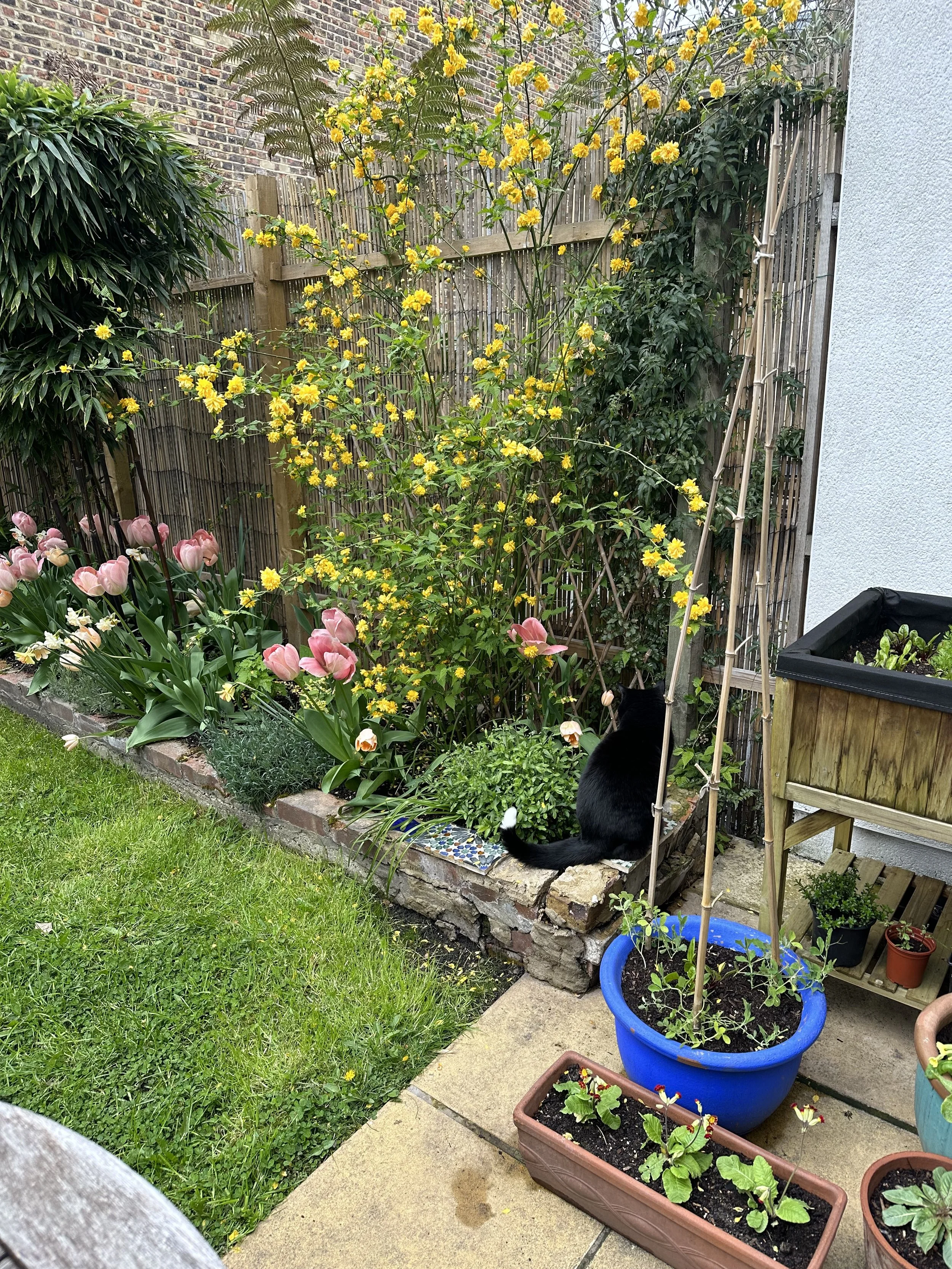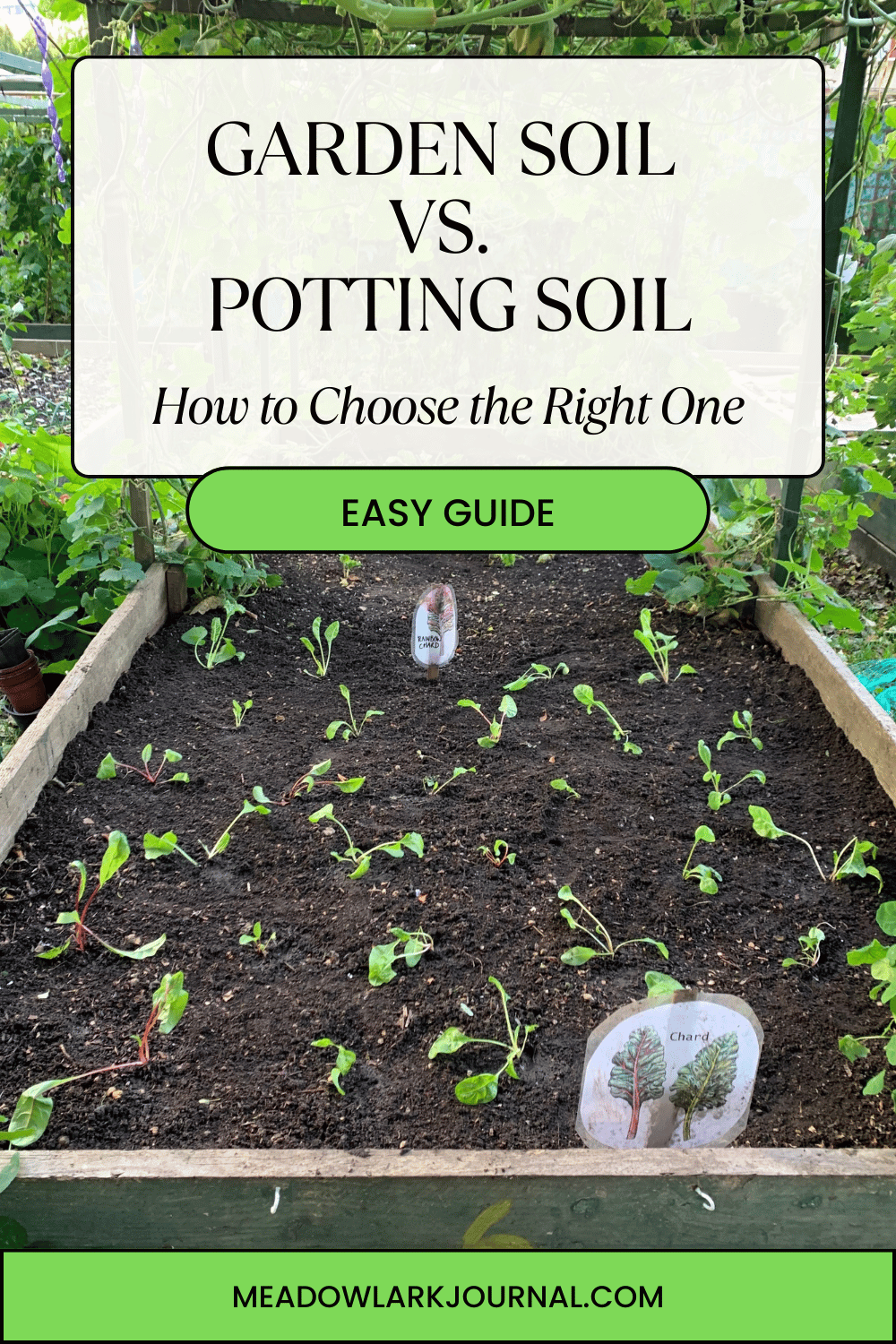Garden Soil vs. Potting Soil: How to Choose the Right One
This website is reader-supported - thank you! This post may contain affiliate links. As an Amazon Associate, I earn from qualifying purchases at no extra cost to you.
The difference between garden soil and potting soil goes beyond the surface.
It is at the very heart of plant health and growth.
Here we're exploring the critical distinctions between these two types of soil.
At a glance, it might appear that soil is just soil.
However, as we delve deeper, it becomes clear that the composition and use of garden soil versus potting soil are uniquely suited to different gardening situations.
What garden soil contains, for instance, is distinct from the blend found in potting soil.
Whether you're growing in your backyard, adorning a small balcony with greenery, or beginning seeds indoors, understanding the nuances between garden soil and potting soil can significantly impact your garden.
Each type of soil is crafted with specific goals in mind, providing the ideal environment for various plants to thrive.
So, let's dive into the details that distinguish these soils and learn how to best use them.
To learn more about choosing the right growing media for your garden, check out my guides:
I use both garden soil and potting soil in my back garden, but for very specific purposes.
When to Use Garden Soil
Garden soil is your go-to for outdoor gardening directly in the ground.
It's ideal for creating flower beds, vegetable gardens, and for planting shrubs and trees.
Here are specific scenarios where garden soil shines:
In-Ground Planting:
When you're planting directly into the earth, garden soil is what your plants will naturally grow in.
It provides a stable environment for roots to spread widely and anchor deeply.
Amending Existing Soil:
If your garden's native soil lacks nutrients or has poor structure, amending it with garden soil enriched with compost can improve its fertility and workability.
Raised Beds:
For raised garden beds, a mix of garden soil and compost can provide a rich, nutrient-dense environment for your plants.
While some gardeners use a blend of garden and potting soil for raised beds, the primary component should be garden soil, especially for deep-rooted plants.
To learn more about growing in raised beds, check out my guide:
When to Use Potting Soil
Potting soil is specifically formulated for use in containers, including pots, hanging baskets, and window boxes.
It's also the preferred choice for starting seeds indoors.
Here's when potting soil is most beneficial:
Container Gardening:
Whether you're growing flowers, herbs, or vegetables in containers, potting soil ensures proper drainage and aeration.
Containers restrict root growth, making the controlled environment of potting soil essential for plant health.
Here is the potting soil I recommend for container gardening:
Houseplants:
Indoor plants thrive in potting soil because it's sterile, preventing disease and pest infestations.
The lightweight nature of potting soil also prevents compaction, allowing roots to grow freely.
Here is the potting soil I recommend for houseplants:
Seed Starting:
Potting soil, or a finer textured seed starting mix, is perfect for germinating seeds.
Its fine texture and sterility promote optimal seedling growth and reduce the risk of damping-off disease.
To learn more about seed starting, check out my guide How Long Does it Take for Seeds to Germinate?
Here is the potting soil I recommend for seed starting:
Specialized Plant Needs:
Some plants require specific soil conditions that are easier to achieve with potting soil.
For example, blueberries and acid-loving plants like azaleas may benefit from specialized potting mixes tailored to their needs.
Here is the potting soil I recommend for acid-loving plants:
For more inspiration, check out my guide:
Top Tips
Never Use Garden Soil in Containers:
Garden soil is too dense for container use, leading to poor drainage and aeration, which can suffocate roots and promote disease.
Always opt for potting soil in containers.
Potting Soil is Worth the Cost:
While garden soil is often less expensive and may be readily available from your yard, potting soil's specialized composition justifies its cost, especially for container gardening and houseplants.
Never Use Peat-Based Potting Soil
The harvesting of peat moss damages peat bogs, which are very important for carbon storage.
Look for peat-free alternatives or potting soils with sustainable ingredients like coconut coir or recycled green waste.
Check out my guide:
My garden border which uses garden soil.
For more tips, check out my guide:
WHat is Garden Soil?
Garden soil, often thought of as just the backdrop to our gardening efforts, is actually a complex and vibrant ecosystem that plays a critical role in the health and growth of our plants.
When we talk about garden soil, we're diving into a world that's teeming with life and rich in diversity, both in its physical structure and biological makeup.
Composition of Garden Soil
At its core, garden soil is a mixture of mineral particles, organic matter, water, and air.
The mineral content comes from the breakdown of rocks and can include clay, silt, and sand.
These components determine the soil's texture, which in turn affects drainage and aeration.
A good garden soil will have a balance of these elements, offering a structure that supports plant roots while providing enough space for water and air to circulate.
Organic Matter and Its Importance
One of the key features of garden soil is its organic matter content.
This includes decomposed plant and animal material, which enriches the soil with essential nutrients like nitrogen, phosphorus, and potassium.
Organic matter also improves soil structure, helping to retain moisture and air, making it easier for roots to grow.
Adding compost or manure is a common practice to boost the soil's organic matter and overall fertility.
To learn more about creating your own compost, check out my guide:
Soil Microbes: The Unsung Heroes
Perhaps the most fascinating aspect of garden soil is its biological component.
The soil is alive with microorganisms such as bacteria, fungi, nematodes, and earthworms.
These tiny creatures play crucial roles in the soil ecosystem, breaking down organic matter into nutrients that plants can absorb, improving soil structure, and even protecting plants from diseases.
The interaction between these soil microbes and plant roots is a symbiotic relationship that is vital for healthy plant growth.
Garden Soil Variability
It's important to note that garden soil can vary widely from one location to another, even within the same yard.
Soil type (clay, loam, sand) and pH level (acidic, neutral, alkaline) can significantly affect what kinds of plants will thrive.
Testing your soil can provide valuable information about its composition and help guide your gardening practices, such as what amendments may be needed to improve its quality.
Here is the soil test kit I use and recommend:
Adapting to Your Garden Soil
Understanding your garden soil is the first step toward successful gardening.
By observing its texture, structure, and how well it retains water and nutrients, you can make informed decisions about what to plant and how to care for your garden.
Amending the soil with organic matter, adjusting pH levels, and even practicing crop rotation or cover cropping can all help to maintain or improve soil health, ensuring a productive garden year after year.
In essence, garden soil is not just "dirt" — it's a complex and dynamic foundation for plant life.
By getting to know the unique characteristics of your garden's soil, you can create a thriving environment that supports plant growth and fosters a healthy ecosystem right in your backyard.
Check out my guide:
What is Potting Soil?
Potting soil, often referred to as potting mix, is the lifeblood of container gardening.
Unlike garden soil, potting soil is a specially formulated medium designed to provide potted plants with the optimal balance of air, moisture, and nutrients.
Let's break down what makes potting soil so essential and unique.
Composition of Potting Soil
The magic of potting soil lies in its composition.
A high-quality potting mix typically includes:
Coconut Coir:
A sustainable alternative to peat moss, coconut coir is made from the fibrous husks of coconut shells.
It's known for its excellent water retention and aeration properties.
Composted Bark:
This adds bulk to the mix, improving drainage and aeration while also contributing to the mix's nutrient content.
Nutrients:
Many potting soils come with a starter charge of fertilizer, providing plants with essential nutrients right out of the bag.
This can be synthetic or organic, depending on the mix.
Perlite and Vermiculite:
These inorganic components are key for aeration and water retention.
Perlite looks like small white particles, and it helps to keep the mix light and improve drainage.
Vermiculite, on the other hand, holds water and nutrients, making them more available to plant roots.
Learn more with my guide:
Why it is important to avoid buying potting mix with peat moss:
Choosing potting soil without peat moss is essential for protecting vital peat bogs, which are slow to regenerate and play a key role in carbon storage.
Alternatives like coconut coir or composted bark offer similar benefits for water retention and aeration, promoting sustainable gardening practices.
By opting for these renewable organic materials in your soil mix, you contribute to environmental conservation while ensuring your plants thrive.
The Benefits of Potting Soil
The beauty of potting soil is not just in its components but in what it offers to container plants:
Drainage and Aeration:
The loose, porous structure of potting soil allows water to drain freely, preventing root rot, while ensuring roots have access to oxygen.
Nutrient-Rich:
With added fertilizers and organic matter, potting soil is often more nutrient-dense than garden soil, supporting plant growth from the get-go.
Disease-Free Environment:
Unlike garden soil, potting soil is usually sterilized or pasteurized to kill off any weed seeds, pests, or diseases, providing a clean start for new plants.
Tailoring Potting Soil to Specific Plants
One of the most significant advantages of potting soil is its versatility.
You can find or create potting mixes tailored to the needs of specific plants, such as succulents, orchids, or acid-loving plants like blueberries.
These specialized mixes adjust the basic components to suit the drainage, pH, or nutrient requirements of particular types of plants, ensuring they get just the right environment for optimal growth.
Refreshing Potting Soil
An important aspect of using potting soil is recognizing that it doesn't last forever.
Over time, organic components break down, compacting the mix and reducing its effectiveness.
Regularly refreshing the soil in your pots or refreshing the top layer with new mix can help maintain a healthy environment for your plants.
Learn more about this in my guide Does Potting Soil Go Bad? Know the Warning Signs.
Check out my guide: The Best Gardening Books for Beginners.
At my community garden we use a mix of potting soil and compost for the raised beds.
Garden Soil vs. Potting Soil: The Key Differences
When comparing garden soil to potting soil, it's like comparing the earth to a carefully crafted ecosystem in a container.
Each has its role, designed to support plant life in different environments.
Here are the fundamental distinctions:
1. Composition
Garden Soil:
This is the natural soil found in gardens and landscapes.
Its composition varies widely based on location, containing a mix of mineral particles (clay, silt, and sand), organic matter, microorganisms, and it may also include rocks, roots, and other natural materials.
Garden soil's texture and fertility depend on its original organic and mineral content and how it has been managed or amended over time.
Potting Soil:
Designed for container gardening, potting soil is a sterile, lightweight, and porous mix.
It typically includes coconut coir, perlite, vermiculite, and often compost, engineered to provide excellent drainage and aeration.
Potting soil is formulated to be free from diseases, weeds, and pests, offering a controlled environment for potted plants.
2. Drainage and Aeration
Garden Soil:
Drainage and aeration depend on the soil's texture.
Clay soils tend to drain poorly and may suffocate plant roots, while sandy soils drain quickly but retain less water.
Amending garden soil with organic matter can improve its structure, but it's still less controlled than potting soil.
Potting Soil:
Specifically crafted to balance moisture retention and drainage, potting soil ensures that roots have access to both water and oxygen.
This balance is crucial for container plants, where the risk of both overwatering and underwatering is higher due to limited soil volume.
3. Weight
Garden Soil:
It's denser and heavier, especially when wet.
This weight can be beneficial for anchoring plants in the ground but is impractical for containers, where excessive weight could strain balconies, shelves, or window sills.
Potting Soil:
Light and fluffy, it's ideal for containers.
The reduced weight makes it easier to move pots around and ensures that the roots can grow and expand without struggling against compacted soil.
4. Nutrient Content and pH Levels
Garden Soil:
Its nutrient content and pH can vary widely, potentially requiring amendments to suit specific plant needs.
With garden soil you often need to test their soil to understand its properties and amend it accordingly with fertilizers, lime, or sulfur to adjust pH levels or with organic matter to boost nutrient content.
Potting Soil:
Most potting soils come with a balanced mix of nutrients suitable for a wide range of plants and have neutral pH levels, making them a versatile medium for container gardening.
Some potting mixes are even formulated for specific plant types, taking the guesswork out of fertilization and pH adjustments.
5. Suitability for Different Types of Gardening
Garden Soil:
It's best suited for outdoor gardens where plants have room to spread their roots into the ground, seeking nutrients and water beyond the immediate planting area.
Its use is integral to creating a natural ecosystem that supports a wide range of plant and animal life.
Potting Soil:
Tailored for containers, it's ideal for indoor plants, balcony gardens, or any situation where natural soil isn't available.
Potting soil provides a controlled environment that can be adjusted to suit the needs of almost any plant, regardless of the local ground soil conditions.
Quick FAQs
Can I use garden soil in pots?
Using garden soil in pots is not recommended due to its heavy and compact nature, which can lead to poor drainage and aeration problems in a container environment.
Garden soil may also contain weed seeds, pests, and diseases that could harm your plants.
Potting soil, which is specifically formulated to be lightweight and sterile, is the better choice for container gardening as it ensures proper root growth and health.
What makes potting soil different from garden soil?
Potting soil is designed to be a lightweight and well-draining medium that provides an optimal balance of air, moisture, and nutrients to plants grown in containers.
It often includes components like perlite, vermiculite, and sometimes slow-release fertilizers, to create an environment that supports healthy plant growth without the risk of compaction or disease.
Garden soil, on the other hand, is denser and meant for in-ground use, containing a mix of organic matter, minerals, and possibly, native soil organisms.
It's not sterilized, which means it could introduce pests or diseases to your plants.
Is it okay to mix garden soil with potting soil?
Mixing garden soil with potting soil can be done, especially for filling raised beds or large outdoor containers where the weight and density of garden soil can help provide stability.
However, it's important to do this carefully to avoid introducing pathogens from the garden soil into a container setting.
A common mix ratio is one part garden soil to one part potting mix, adjusted with compost or other organic matter to improve fertility and drainage.
How often should I replace potting soil in my containers?
Potting soil in containers should typically be replaced every year or two, depending on the plant's growth rate and soil condition.
Over time, potting soil can become compacted, lose its structure, and deplete its nutrient reserves, which can hinder plant growth.
Refreshing the soil or replenishing its nutrients with compost or a slow-release fertilizer can help maintain a healthy growing environment for container plants.
Can I make my own potting soil?
Yes, making your own potting soil can be a cost-effective and customizable way to provide your plants with a tailored growing medium.
A basic DIY potting soil recipe includes a mix of coconut coir for moisture retention, perlite or vermiculite for aeration, and compost or worm castings for nutrients.
Adjusting the proportions of these components allows you to create a potting mix that meets the specific needs of your plants, whether they require more drainage, moisture retention, or nutrient density.
Wrap-Up
As we wrap up our exploration of garden soil vs potting soil, it's clear that both types of soil play pivotal roles in the world of gardening, each enriched with organic materials to support plant health in their unique environments.
Choosing the right soil mix isn't just about what's used; it's about understanding the specific needs of your plants and how the environment you're planting in affects those needs.
Whether you decide to enrich your garden beds with nutrient-dense garden soil or opt for a specialized potting mix for your container plants, remember that the success of your green endeavors lies in the balance and quality of organic materials used.
Pin this post to save it for later!
